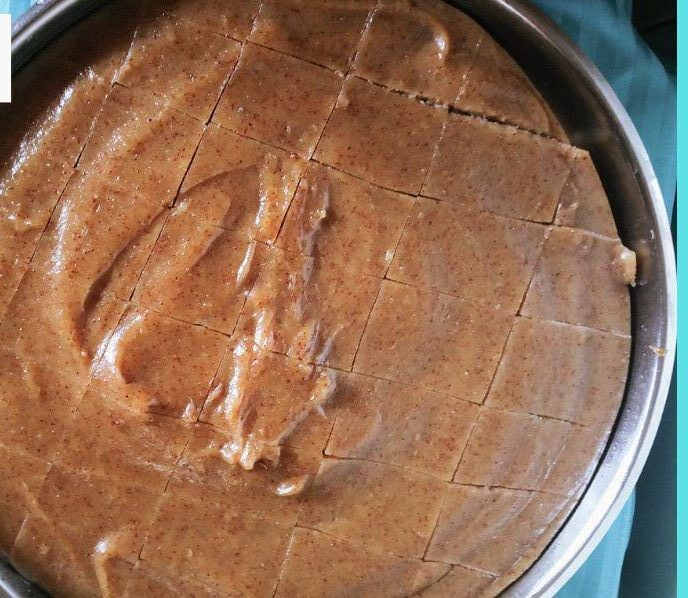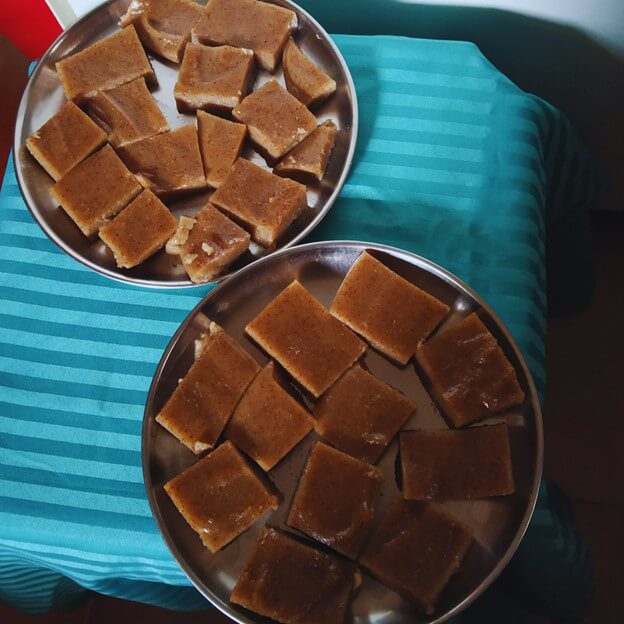Reading Time: 4 minutes
Jayashree tells us about the many benefits of finger millet and traces its antiquity to the Harappan civilisation. She also shares a recipe – an exclusive for Different Truths.
Ragi is an age-old nutrient-dense crop used by many civilisations. It is believed that finger millet originated in Africa. It was cultivated on a large scale as an annual crop in Ethiopia and Uganda. It was introduced in India 4000 years back, and evidence has been found in the excavations of the Harappan civilisation.
Finger Millet derives its name from the appearance of the head of the grain comprising five spikes which resemble the five fingers of a hand. It is commonly known as Ragi in Kannada and Nachni in Marathi; Eleusine coracana is the scientific name, and it belongs to the family of Poaceae. It is grown as a cereal crop in arid and semi-arid areas and requires moderate rainfall.
Finger Millet is tiny black, red, and white seeds resembling mustard seeds. It contains vitamins B, C and E, iron, calcium, and phosphorus. It helps to control bad cholesterol. It is rich in dietary fibre, is a powerhouse of iron and helps treat anaemia.
It helps to keep the body cool during summer.
It helps to keep the body cool during summer. Ragi Mudde is the typical food of many people in South India. It is a simple, filling food served usually with gravy or sambar.
Nutrition in Finger Millet
Finger millet is a tiny seed with many health benefits. It consists of carbohydrates, fibres, proteins, fats, and vitamins C and E. It also contains riboflavin, niacin, thiamine, folic acid, manganese, iron and phosphorus. It helps to keep the body cool during summer. A good breakfast as ragi idli provides nutrients to the body and keeps it satiated for a long time. It makes a gluten-free diet. Ragi is one of the few foods offering high-quality proteins to the body.
Of all the cereals and millets, ragi has the amount of calcium (344mg%) and potassium (408mg%)

Benefits of Finger Millet
- Rich in protein – It is a good source of protein as it contains elesunin and significant quantities of cysteine. The body quickly absorbs this kind of protein.
- Helps to control diabetes – Studies have shown that regular finger millet usage helps maintain blood sugar levels. The seed coat of finger millet is rich in dietary fibre and phytochemicals. It is ideal for making a regular diet for people who have diabetes.
- Anti-cancer properties- Finger millet contains antioxidants such as flavonoids, phenolic acids, and tannins. Studies indicate that it prevents esophageal cancer.
- Helps prevent cardiovascular disease – Regular consumption of ragi in different ways is good for the heart. It consists of good cholesterol, which helps to pump blood efficiently.
- Weight loss – Ragi is rich in fibre and helps lose weight. It can be used in porridges, malt, idli and dosa.
Ragi Halabi
Ragi Halabi is a delicacy from South India. It is a healthy twist to the usual one made with rice. The grains are soaked, ground with fresh coconut and the milk is extracted. It is then cooked to make a decadent sweet. It is gooey, melt-in-the-mouth sweet. It is popular in South Canara.
Ragi is small grains consisting of specks of dust.
Ragi is small grains consisting of specks of dust. Soak it in water for three hours, rinse and discard the water. Repeat it twice and dry it on a cotton cloth. This is the prerequisite step to ensure no dust granules are mixed in the preparation.
Storage
Ragi has a good shelf life. It can be kept for a long time in good storage conditions.
Uses of finger millet
Finger millet flour is versatile to use. It can be used in baking cookies. Many dishes such as dosa, idli and thalipeeth can be made for breakfast. Ragi Mudde is usually served for lunch. I am sharing a sweet delicacy from South Canara.
Ingredients:
- ● 1 cup ragi (cleaned)
- ● 1 cup jaggery
- ● 1 cup fresh coconut
- ● two tablespoons of ghee
- ● 2.5 cups water
- ● 1/2 teaspoon cardamom powder
- ● a few cashew pieces
Method:
- Soak ragi for five hours. Remove the spikes by rinsing and cleaning.
- Grate the coconut.
- Discard the water, and grind ragi and coconut to a fine paste with little water.
- Strain the liquid through a sieve, and press the residue with a spoon. Grind it again by adding some more water. I used 1.5 cups of water.
- Grease a plate with a bit of ghee.
- Take the jaggery and melt it with a cup of water. Pass it through a sieve to remove impurities.
- Put the melted jaggery and the strained puree in a thick bottom pan. Let it cook, add some ghee, and keep stirring. Please do not keep it unattended at this time.
- Put the remaining ghee. Once it thickens to a mass and leaves the side, put cardamom powder, mix and pour it over the greased plate.
- Cut it into squares. Decorate with roasted cashews. Ragi Halbai is ready to serve.

Photos by the author

















Many benefits of Ragi and savoury can be made using it well shared
Thankyou so much
“… a decadent sweet …” enticingly expressed!
Thankyou so much.